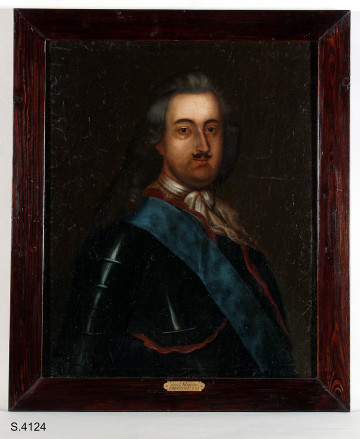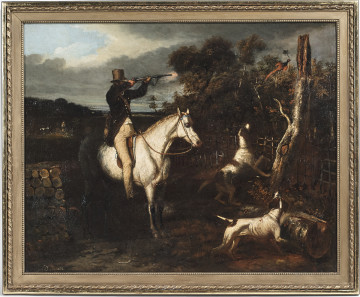
Jozef Klemens Czartoryski
18th century
Castle Museum in Łańcut
Part of the collection: photography
The photograph we present here can be seen on a daily basis in the Ordynat's Office, on the ground floor of our museum. The camera lens captured the right profile of a woman who can undoubtedly be described as beautiful. On her head there is a crown from under which a transparent veil flows. Attached to the crown there is an ornament that covers the entire ear. It has the shape of a circle, with a diamond placed in it, from which three rows of beads depart, ending with circles with crosses inscribed in them. A necklace can be seen around her neck. The woman is wearing a richly decorated coat lined with white fur, with a magnificent fastening at the front. The woman is holding a small but quite thick book. The cover and spine of the book are richly set with precious stones. The photograph has two inscriptions: "ANNO 1922" at the top and "REGINA TUTUROR ROMÂNILOR" at the bottom. In the bottom right corner, you can see the stamp of the photo studio where the photo was taken. In the lower left corner of the photograph, above the inscription, there is a handwritten signature: Maria and the date: 1923. The costume of this woman is not accidental and the caption of the photograph explains to us that it is none other than the Romanian queen herself, Mary, wife of King Ferdinand.
The visit of the Romanian royal couple, which took place on 23 – 28 June 1923, was the first official visit of the crowned head after Poland regained independence. In Łańcut, the king and queen stopped from 27th to 28th June. During their short stay, they visited the castle, the park, the orchid house, and the carriage collection. The Queen, who was a lover of horses, went for a horse ride in the company of the Counts of Potocki.
This photo with Queen Mary's handwritten signature is a memento of the visit.
You don't have to travel to Rome to know that the Via Appia is one of the oldest roads, fragments of which have survived to this day. Its construction was started in 312 B.C.E by the censor Appius Claudius Caecus. It was created mainly for military and commercial purposes. It connected Rome with Campania.
Roman and his wife, Elżbieta, née Radziwiłł, transformed the Castle into one of the most beautiful and modern magnate residences in Europe. Between 1889 and 1911 they carried out a major renovation. The work was led by the French architect Armand Beaque and the Italian draughtsman Albert Pio. The castle was connected to the water supply, sewage system and electricity network. Most of the interiors that we can visit today were created during this reconstruction.
Anna Szczęsny
Author / creator
Object type
photography
Technique
photographic
Material
photographic paper
Creation time / dating
Owner
Muzeum - Zamek w Łańcucie
Identification number
Location / status

18th century
Castle Museum in Łańcut

XIX century
Castle Museum in Łańcut

XIX century
Castle Museum in Łańcut
DISCOVER this TOPIC
Museum of King Jan III's Palace at Wilanów
DISCOVER this PATH
Educational path